This article was medically reviewed by Troy A. Miles, MD. Dr. Miles is an Orthopedic Surgeon specializing in Adult Joint Reconstruction in California. He received his MD from the Albert Einstein College of Medicine in 2010, followed by a residency at the Oregon Health & Science University and fellowship at the University of California, Davis. He is a Diplomat of the American Board of Orthopaedic Surgery and is a member of the American Association of Hip and Knee Surgeons, American Orthopaedic Association, American Association of Orthopaedic Surgery, and the North Pacific Orthopaedic Society.
There are 7 references cited in this article, which can be found at the bottom of the page.
wikiHow marks an article as reader-approved once it receives enough positive feedback. In this case, 91% of readers who voted found the article helpful, earning it our reader-approved status.
This article has been viewed 92,872 times.
Having a broken foot can feel like a debilitating injury. Depending on the type, severity, and the location of the break, you might be looking at weeks to months in a cast or immobilizing boot. However, having a broken foot doesn't mean that you will be completely immobilized. In most cases, when you have a broken foot you don't have to quit exercising, you just have to adjust your routine.
Steps
Doing Upper Body Cardiovascular Exercise
-
1Use an arm bike. An arm bike is a cardiovascular exercise machine that looks like a stationary bike, but the pedals are for your hands instead of for your feet. Arm bikes come in a variety of styles, from ones that you can place on a tabletop or desk, to arm bikes that include a seat and a variety of resistance levels.
- To use an arm bike, sit down, put your hands in the pedals, and move your arms back and forth to turn the pedals.
-
2Throw some punches. While you cannot do roundhouse kicks or other kickboxing moves with a broken leg, you can still punch. Punching the air, or shadowboxing, is a great cardiovascular workout.
- To shadowbox, sit in a sturdy chair and clench your fists. Then, start punching the air in front of you. Continue to throw punches for around 30 minutes or for as long as you can. You can even divide your shadowboxing workouts into three 10 minute segments throughout the day.
- Include various types of punches in your workout. For example, you can throw punches straight ahead of you called jabs, bend your arm in the shape of an "L" and throw a hook punch, or come up from below and deliver an uppercut.[1]
Advertisement -
3Go for a walk on crutches. If you have a broken foot, then you may have been instructed to use crutches. You can walk on your crutches using a three-point method, which is when you place the crutches about six to 12 inches (30.5 cm) in front of you and then use your good foot to step into that position.[2]
- Use your hands to support the weight of your body. Do not support your body weight with your armpits.
- Do not put any more than light pressure on your broken foot.
- Try walking around in your home for a few minutes per hour. You might also consider going around the block a couple of times per day when you start feeling stronger.
Focusing on Strength Training
-
1Do a push-up variation. Push-ups are a great way to build upper body strength and you may be able to do them with some slight modifications. Try doing push-ups on your knees or do incline push-ups while standing on one leg. Place your hands on a counter or a sturdy chair and do some push-ups. Make sure your injured foot is off of the ground and that you are not putting pressure on it.
-
2Use rings to exercise. If you have rings set up, or are able to get to a gym, try a set of ring rows, also called reverse push ups.[3] Hold onto the rings with your arms straight. Pull up on the rings, bending your arms until the rings reach your chest.
- As you use the rings, allow your injured foot to rest on top of the good leg.
- You can also do regular pull-ups using rings but make certain that your feet don’t hit the ground. Keep your knees bent and allow yourself back onto the floor gently.
-
3Complete a dumbbell bench press.[4] Lie down on a bench with your back straight. Hold out your arms at right angles to your body with elbows bent. Lift straight up and lock, tightening your chest. Bring the weights back to your chest slowly.
- Your feet should be resting on the floor with the injured foot on a pillow or extended.
- This exercise works on the shoulders and triceps.
- Use the amount of weight you are comfortable with.
-
4Do the one-arm shoulder press while sitting.[5] Choose your weight and then sit down with your back straight. Start with elbows bent and lift straight up. This works on the chest, shoulders and triceps.
-
5Try a sitting dumbbell upright row. Pick an amount of weight you can lift relatively easily. Sit down with your back straight. Start with your arms by your sides and lift so that the weights end up at your armpits. This works on the trapezoids (traps) and biceps.
-
6Do bicep curls. Sit down with your back straight and choose your weights. Start with your arms by your sides and then rotate the palms of your hands so the palms face inward. Lift out and up, turning the palms outward so that the weights end up at shoulder height and turned out (away) from your body.[6]
- You can do these on an incline as well.
Exercising Safely With a Broken Foot
-
1Consult with your doctor about your desire to continue working out. Exercise can be beneficial for recovery, but in some cases, you may need to stay off of your foot completely for a few weeks Ask your doctor before you begin an exercise routine of any kind.
- If you experience any pain or swelling, let your physician know.
- Make sure you go back for any checkups your physician recommends
-
2Work with a physical therapist. Doing physical therapy may help with your recovery and it is also a good way to find out about appropriate exercises that you can do. Your doctor can refer you to a physical therapist who can work with you to develop an at-home exercise routine that is appropriate for your injury.
-
3Wear special foot gear as instructed. The bones in your foot will need to be immobilized for at least a few weeks so that they can reconnect. To help keep your foot immobile, you may need to wear special foot gear, such as a brace or a boot.[7]
- If you have been instructed to wear something like this, make sure that you do. Do not stop wearing the foot gear until your doctor has said it is okay.
Warnings
- Be very cautious when working out. Don’t forget to warm up, cool down, and stretch. After warming up, keep the reps relatively low, especially at first. You want to protect the healing process of your broken foot at all times.⧼thumbs_response⧽
References
- ↑ http://www.shape.com/fitness/workouts/home-boxing-workout
- ↑ http://www.upmc.com/patients-visitors/education/rehab/Pages/walking-with-crutches-3-point-sequence.aspx
- ↑ https://www.coachmag.co.uk/exercises/home-workouts/4502/gymnastic-ring-workouts-for-small-spaces
- ↑ https://www.coachmag.co.uk/chest-exercises/7391/how-to-do-the-dumbbell-bench-press
- ↑ https://www.acefitness.org/resources/everyone/exercise-library/186/seated-shoulder-press/
- ↑ https://powerliftingtechnique.com/bicep-curls-standing-or-sitting/
- ↑ https://www.footankle.com/patients/hurt-foot-workout/
About This Article
Having a broken foot can make exercising a challenge, but by adapting your workout a bit, you can still get in your gains or cardio while you recover. For cardio exercise, focus on upper body exercises, like using an arm bike at the gym or shadow boxing from a sitting position. Even walking with crutches can give your upper body a good workout. To keep up with your strength training, do dumbbell bench presses or sitting bicep curls. For a tougher workout, lift weights from an incline bench. If you can’t get to a gym, you can still do pushups from your knees or with your good leg. You can also work with a physical therapist, who will help you recover and choose which exercises to do in the meantime. If you experience pain or swelling around your broken foot, ease off the exercise and let your doctor know. For more tips from our Medical co-author, including how to use rings to exercise with a broken foot, read on!
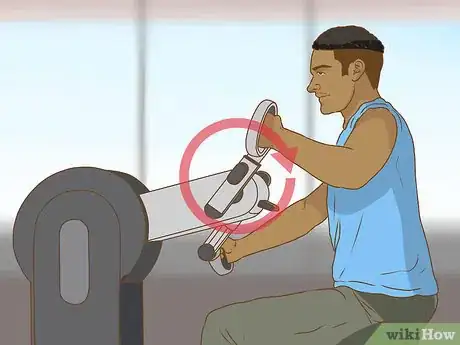

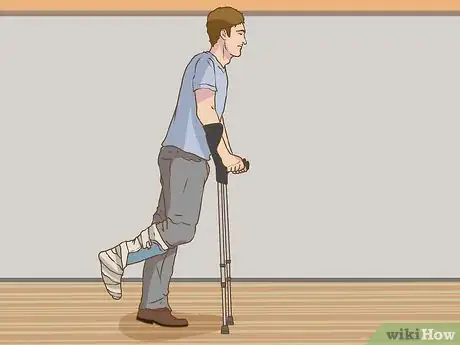
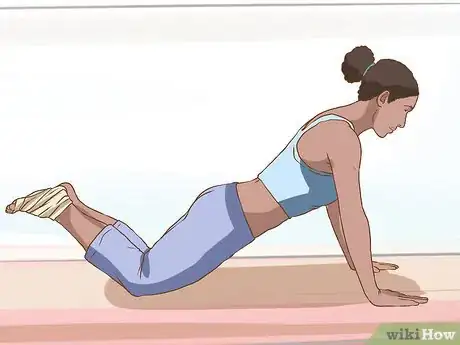
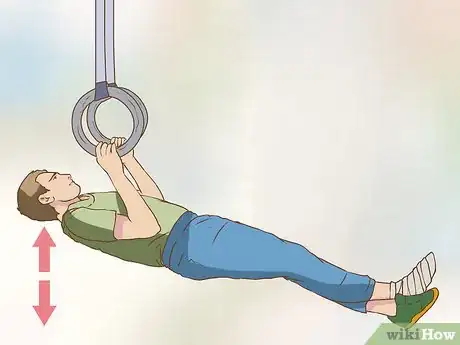

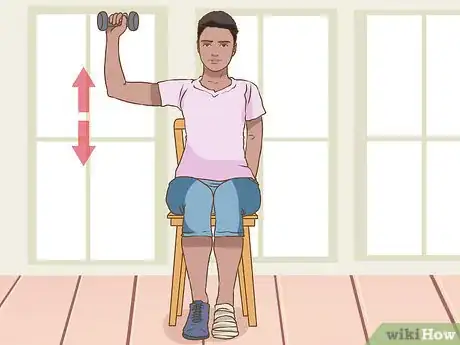
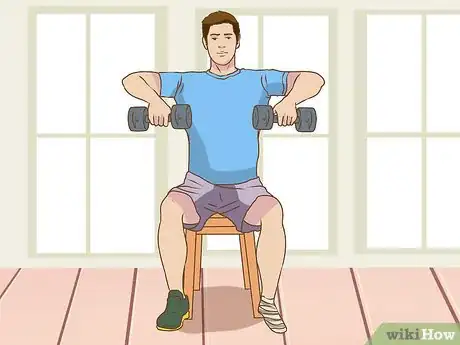
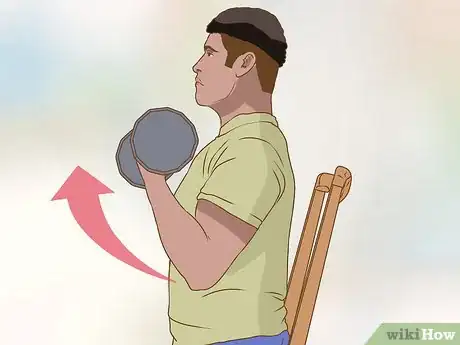


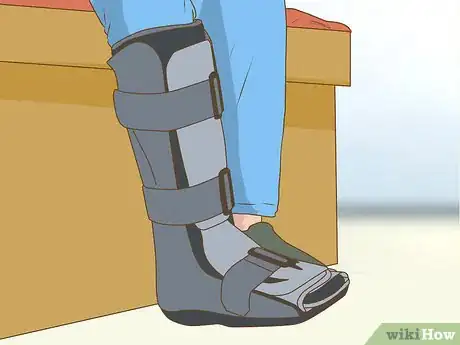



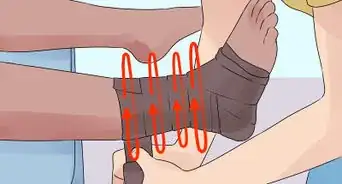


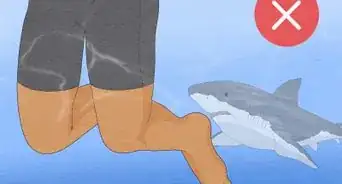



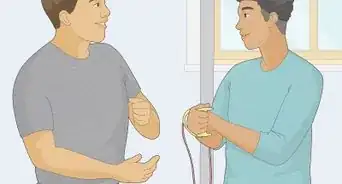


















































Medical Disclaimer
The content of this article is not intended to be a substitute for professional medical advice, examination, diagnosis, or treatment. You should always contact your doctor or other qualified healthcare professional before starting, changing, or stopping any kind of health treatment.
Read More...